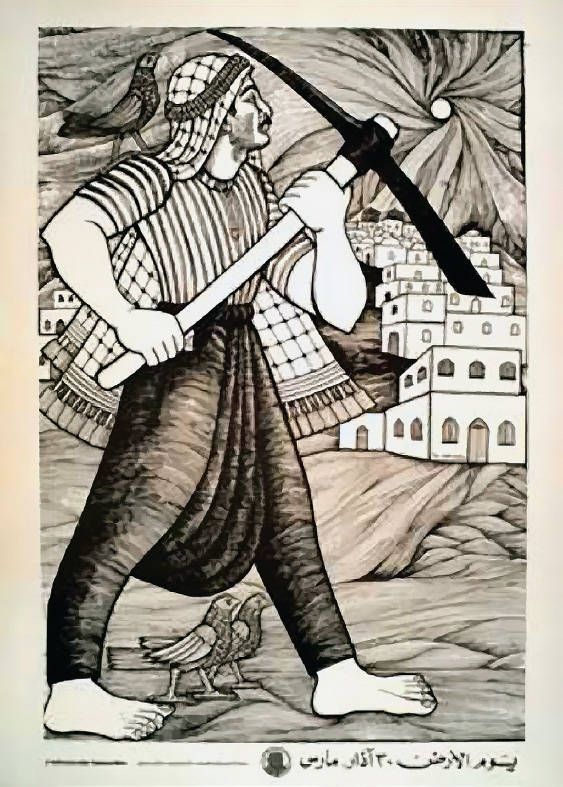Visual Source 22.4
A Palestinian Nation in the Making
If the establishment of Israel as an independent state was a great triumph for Jewish nationalism, it was a disaster for Arabs in general and Palestinian Arabs in particular. In the decades that followed, Israel and various Arab states (Egypt, Jordan, and Syria, for example) went to war repeatedly. The so-called Six Day War of 1967 brought under Israeli control additional Palestinian land, including the West Bank, the Gaza Strip, and East Jerusalem, areas now known as the Palestinian Territories.
At the same time, the Arabs of Palestine, both within Israel and in the adjacent territories, were developing a distinct national identity of their own. Many of them had lost their land and had lived for several generations as refugees in overcrowded camps in neighboring countries or territories where they were dependent on services provided by the United Nations. Almost all Palestinians felt oppressed, constrained, or discriminated against by Israeli authorities. Their emerging national identity found expression in the Palestinian Liberation Organization (PLO), founded in 1964. Initially the PLO called for the complete liberation of Palestine from Zionist colonialism, but by the late 1980s the organization had implicitly recognized the right of Israel to exist and sought a “two-state solution” with an independent Palestine and Israel living side by side.
Achieving even a limited Palestinian state, however, has proved extraordinarily difficult. In pursuit of their national goals, Palestinians have conducted raids, suicide bombing missions, and rocket attacks on Israel from camps in neighboring territories and on several occasions have organized large-scale violent resistance movements known as intifada. For its part, Israel has launched highly destructive large-scale military actions in the Palestinian territories, imposed economic blockades that have brought immense suffering to Palestinians, built walls and fences that have disrupted the normal movement of Palestinians, and continued to enlarge the Jewish settlements, especially in the West Bank. Both sides have presented their actions as largely defensive and reactive to the provocations of the other. They have also engaged in periodic negotiations with each other, but those efforts have thus far foundered on unbridgeable differences as to the size and nature of a future Palestinian state, the status of Jerusalem, and the right of Palestinian refugees to return to their lands in Israel. Divisions among Palestinians have also hampered their movement, particularly the recent rivalry between the PLO and Hamas, an Islamic organization with both welfare and political/military functions.
Like other peoples seeking an independent state, Palestinians have represented their struggles in posters such as Visual Source 22.4, created by the Palestinian artist Abdel Rahman Al Muzain in 1984. Featuring a Palestinian farmer, it was undertaken to commemorate Land Day, an annual observance of the occasion in 1976 when six Palestinians were killed in demonstrations against Israeli confiscation of their land.17

Question
What significance would you attach to the posture and the traditional clothing of the farmer? Why do you think the artist depicted him with a pickax rather than a rifle?
Question
What message is conveyed by the rows of traditional houses on the hillside behind the farmer?
Question
What expectations for the future does the poster imply? Consider the meaning of the doves between the feet and on the shoulder of the farmer as well as the sun’s swirling rays that seem to link the earth and sky.